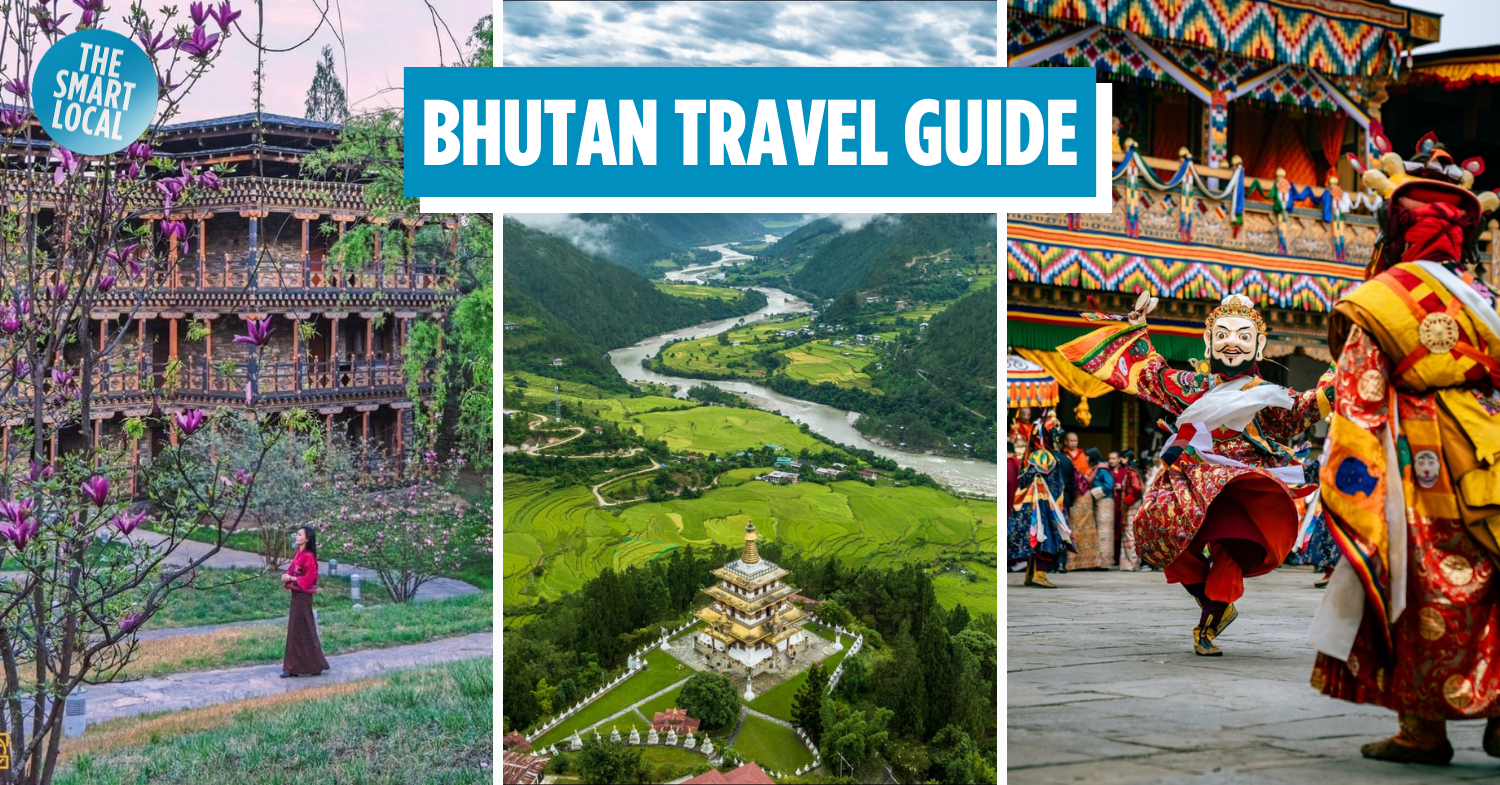Travelling to Bhutan from Singapore
What do you know about Bhutan?
For most Singaporean travellers, not much.
Nicknamed the “Land of the Thunder Dragon,” this country on the southern slopes of the eastern Himalayas is a gorgeous travel destination with towering peaks, never-ending valleys, and crystal-clear rivers. Add ancient monasteries and traditional villages to the mix, and you’ve got a scene right out of your wildest dreams.
Travellers often deem it as ulu and inaccessible. But here’s one fact you may not know: Drukair, the kingdom’s national flag carrier, actually flies to and from Changi Airport.
The current exchange rate is US$1 = ~S$1.35 as of 11th July 2024.
Table of Contents
- Travelling to Bhutan from Singapore
- What to know before travelling to Bhutan
- Why does it cost US$100/day to visit Bhutan?
- Visa requirements for Singaporean travellers to Bhutan
- How to get around Bhutan
- Tour guides & packages
- Where to stay in Bhutan
- When’s the best time to visit Bhutan
- How to get to Bhutan from Singapore
- Other tips for travelling to Bhutan
- You’re all set for your trip to Bhutan
What to know before travelling to Bhutan
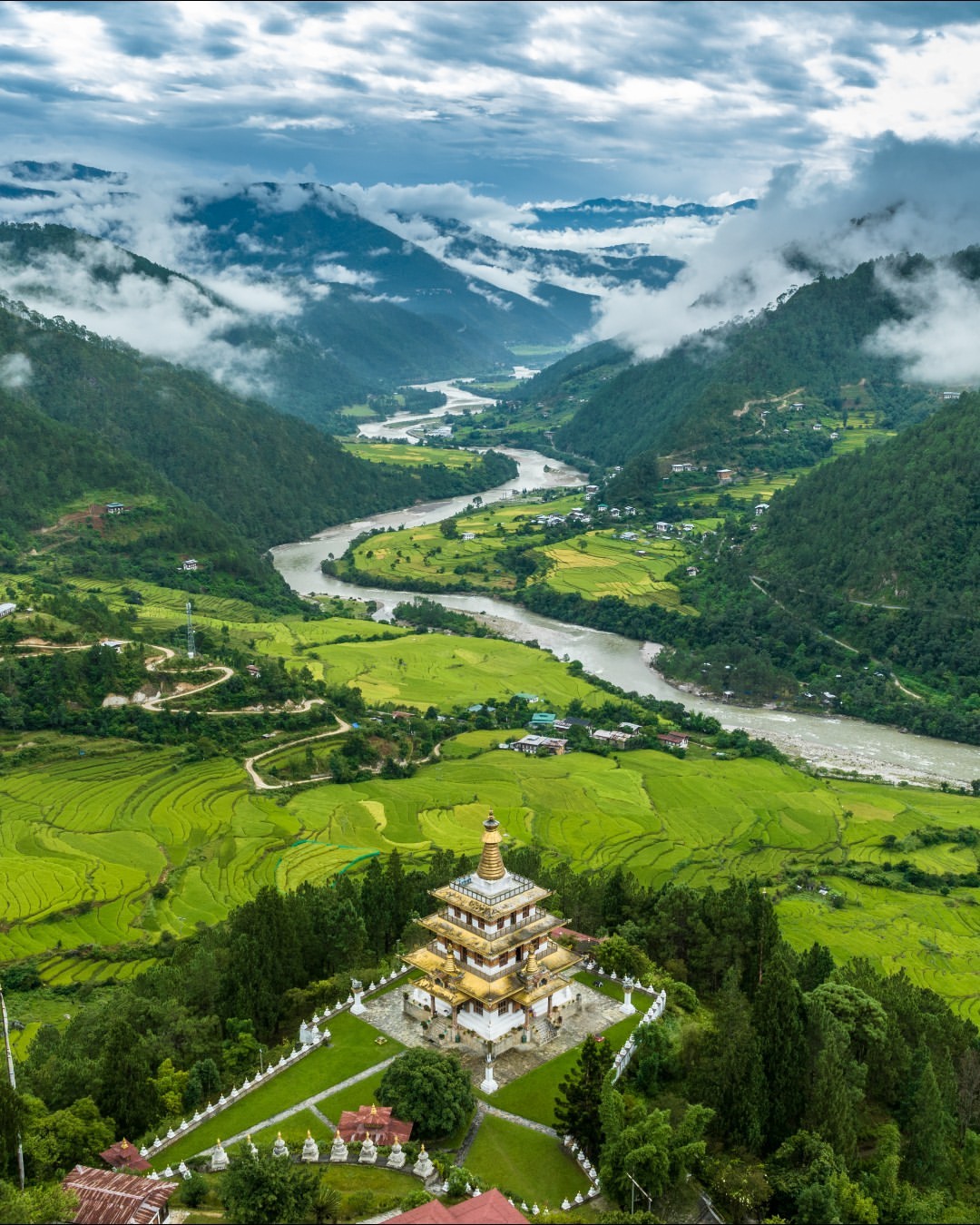
Image credit: @tourismbhutan via Instagram
Sustainable Development Fee
The first thing you need to know is that Bhutan is not a destination for budget travel. For one, international tourists to Bhutan will have to pay the US$100/day Sustainable Development Fee (SDF). So if you’re travelling there for 7 days, you’d pay US$700 just for the SDF. The costs of travelling to Bhutan can add up, so make sure to budget accordingly.
However, this means that you’ll be able to truly appreciate the destination without having to fight off hoardes of other tourists. And you can be sure that the landscapes in Bhutan are maintained in its natural state.
Culture & traditions
Bhutan is also home to some of the most sacred sites in the world. Most of its culture and traditions are heavily drawn from Buddhism. In fact, Mahayana Buddhism is the country’s official religion.
As travellers in Bhutan, you’ll find yourself visiting some of the most majestic spiritual sites in the world. When entering spiritual and religious sites in Bhutan, respect local customs by dressing modestly. As a rule of thumb, it’s customary to cover your shoulders and knees.
Language
The main language spoken in Bhutan is Dzongkha, also known as Bhutanese. It’s a Sino-Tibetan language and serves as the country’s sole official and national language. However, English is widely used and taught in schools. Plus, it’s the official working language of the government – so you’ll be able to get by in Bhutan even if you don’t speak Dzongkha.
Why does it cost US$100/day to visit Bhutan?
We’ve all seen popular destinations in the world that have been “ruined” by mass tourism. Think: A particular city that’s sinking under the weight of millions of tourists; and a neighbouring country which has closed popular beaches in a bid to save them from environmental damage.
While Bhutan’s tourism sector does create numerous jobs for Bhutanese people, the country follows a “high value, low impact” tourism model. Bhutan’s US$100/day SDF helps to gatekeep that – and is designed to preserve its cultural heritage, protect its environment, and ensure sustainable development.
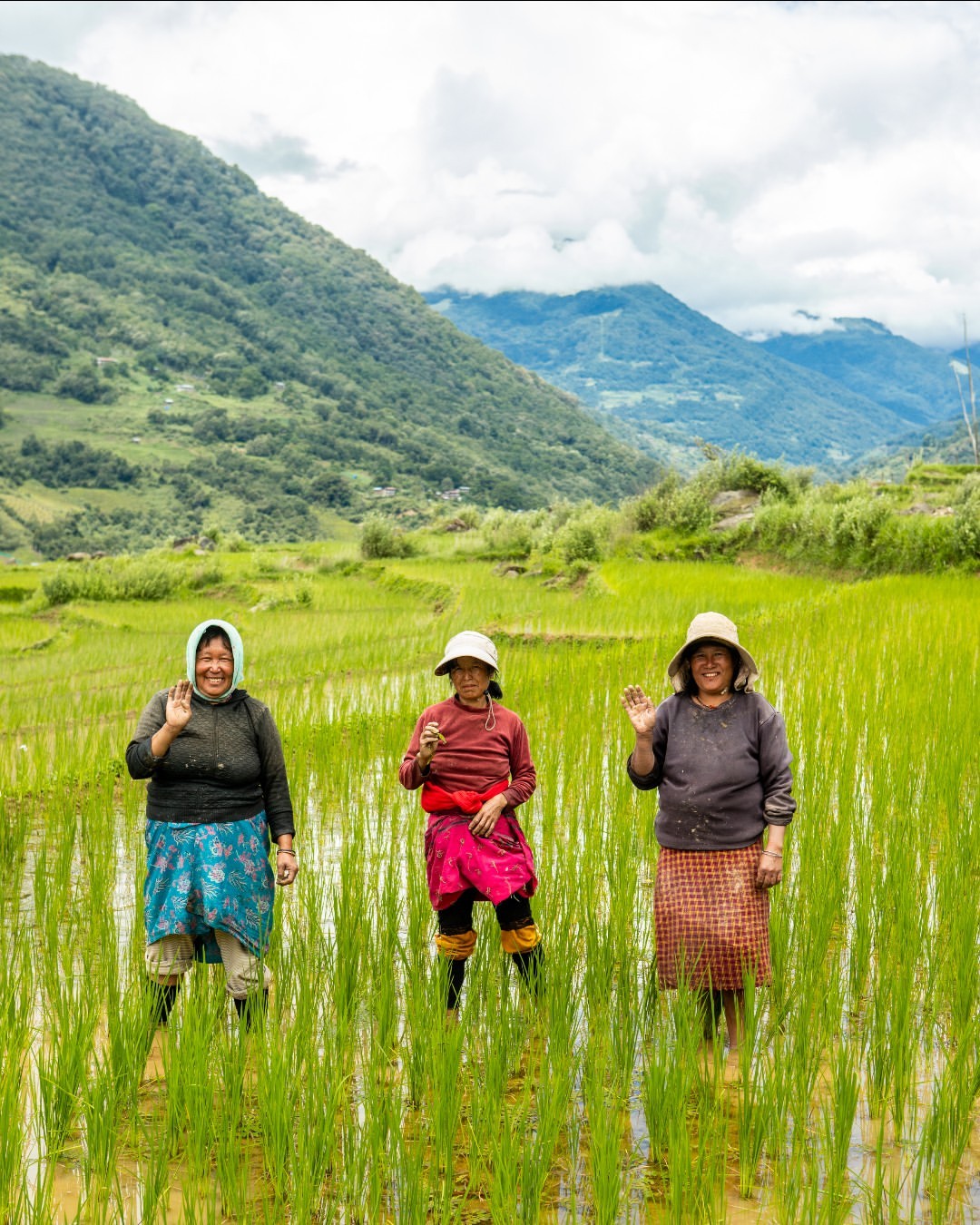
Your SDF will help to support local farmers as well.
Image credit: @tourismbhutan via Instagram
The SDF helps to fund various initiatives like cultural preservation programs, environmental protection efforts, infrastructure improvements, and training for young Bhutanese folks.
In the past, the SDF was part of the bigger Minimum Daily Package Rate and covered accommodation, meals, transportation, guide services, and entry fees. However, it now solely contributes to these developmental projects.
Visa requirements for Singaporean travellers to Bhutan
View this post on Instagram
Now a critical question prevails, “still need visa or not ah?”
Yes, Singapore citizens must obtain a visa prior to their travel. The SDF and visa for Bhutan are 2 distinct components of the travel requirements for visitors to the country. The SDF is a contribution to Bhutan’s development, while the visa is an administrative fee for permission to enter the country.
However, the visa process here is unique and visas are only issued to tourists who have booked their trip through a licensed Bhutanese tour operator. The tour operator will then handle the visa application process on behalf of the traveller. Visa clearance takes at least 10 days, so we’d recommend sorting this out early.
As of publishing, the visa fee for Singaporeans is US$40/person per trip and it’s typically included in the overall tour package cost. Passports should have at least six months of validity from the date of arrival in Bhutan.
How to get around Bhutan
Getting around Bhutan typically requires the services of a licensed Bhutanese tour operator, as independent travel is generally not permitted. As such, most visitors travel by private car or minivan with a driver and guide, which is usually included in tour packages.
The main east-west highway connects major towns, but roads can be winding and journeys can take longer than expected due to the mountainous terrain. Public transportation is limited and not typically used by tourists. Taxis, on the other hand, are available in larger towns but are not common in rural areas.
If you’re travelling between cities, domestic flights are available between Paro and a few other cities like Bumthang, Gelephu, and Yongphula.
Tour guides & packages
As mentioned above, it’s a requirement for all tourists to book their trip through a registered Bhutanese tour operator or international partner.
Below, we break down the different tour packages for travellers to Bhutan, as well as a tour to book for each:
Cultural tours
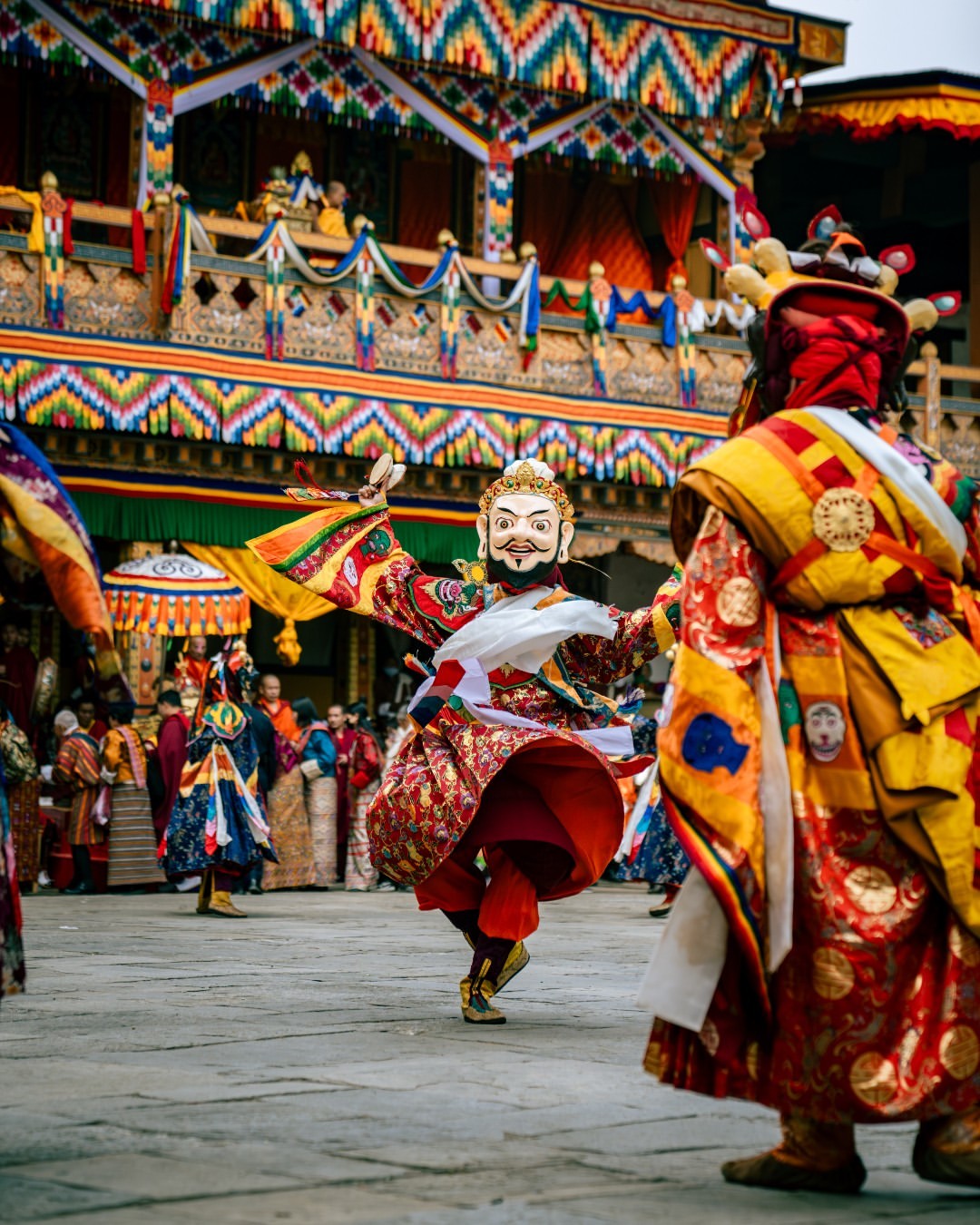
Image credit: @tourismbhutan via Instagram
Bhutan’s rich cultural heritage has been carefully preserved over centuries, so there’s plenty to see for those interested to dive deep into the culture. Cultural tours are one of the most common ones in Bhutan and typically include visits to the famous cliffside monasteries, imposing fortresses that serve as administrative centres and monastic complexes, and various other cultural sites of significance.
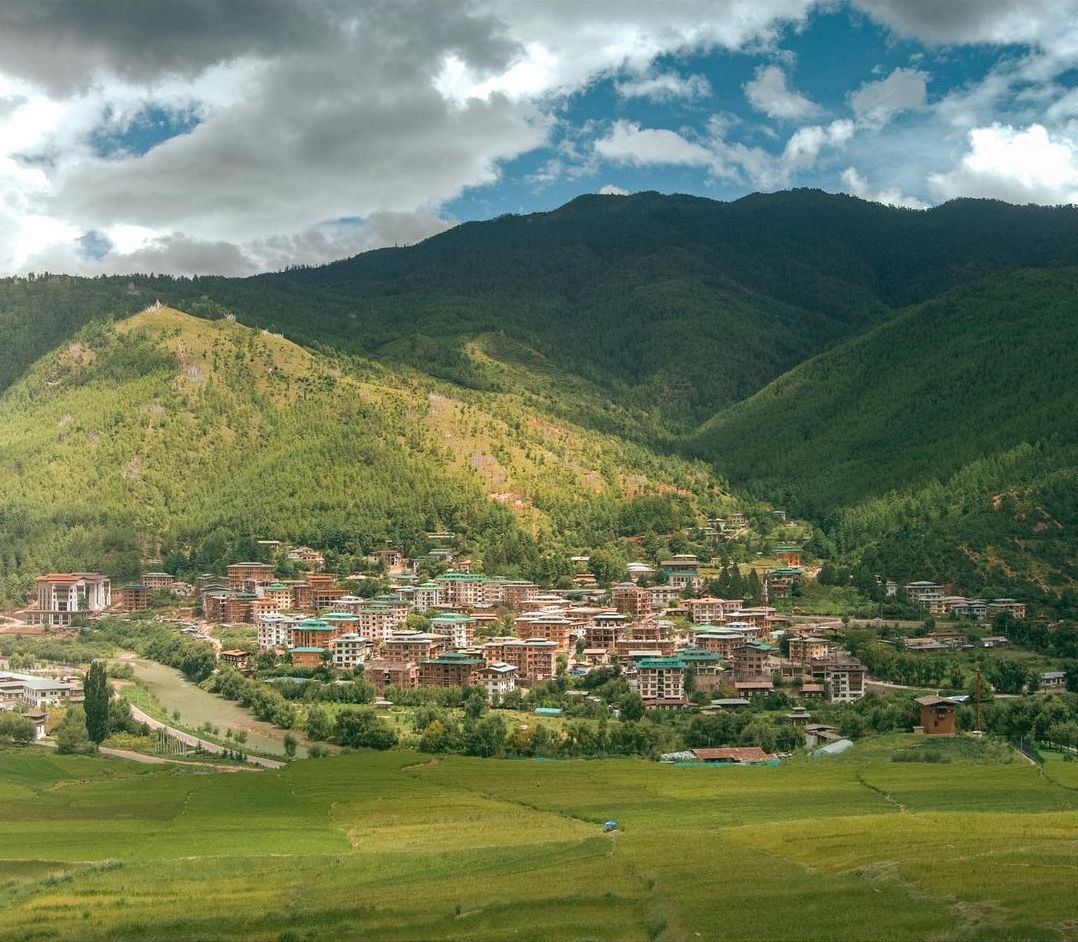
Image credit: @gypsys_journal via Instagram
Tour to book: Druk Asia’s 11-Day Cultural Tour Travel Plan (from US$3,200) offers an in-depth exploration of the country’s highlights. Visitors will get to see iconic dzongs in Thimphu, Punakha, and Paro, hike to Tiger’s Nest Monastery, explore sacred sites in Bumthang Valley, and visit sites like Buddha Point and National Memorial Chorten. You might even observe black-necked cranes in Phobjikha Valley.
Adventure packages
Adventure packages in Bhutan cater to active travellers and outdoor enthusiasts seeking to explore the country’s stunning natural landscapes and challenging terrain. These tours typically include a mix of trekking, hiking, and other outdoor activities that showcase Bhutan’s breathtaking Himalayan scenery.
Trust us, we’re talking about more than just your average hike here. Expect to embark on exhilarating treks through pristine forests, scale mountain passes, and experience the thrill of conquering iconic landmarks like the Tiger’s Nest Monastery.
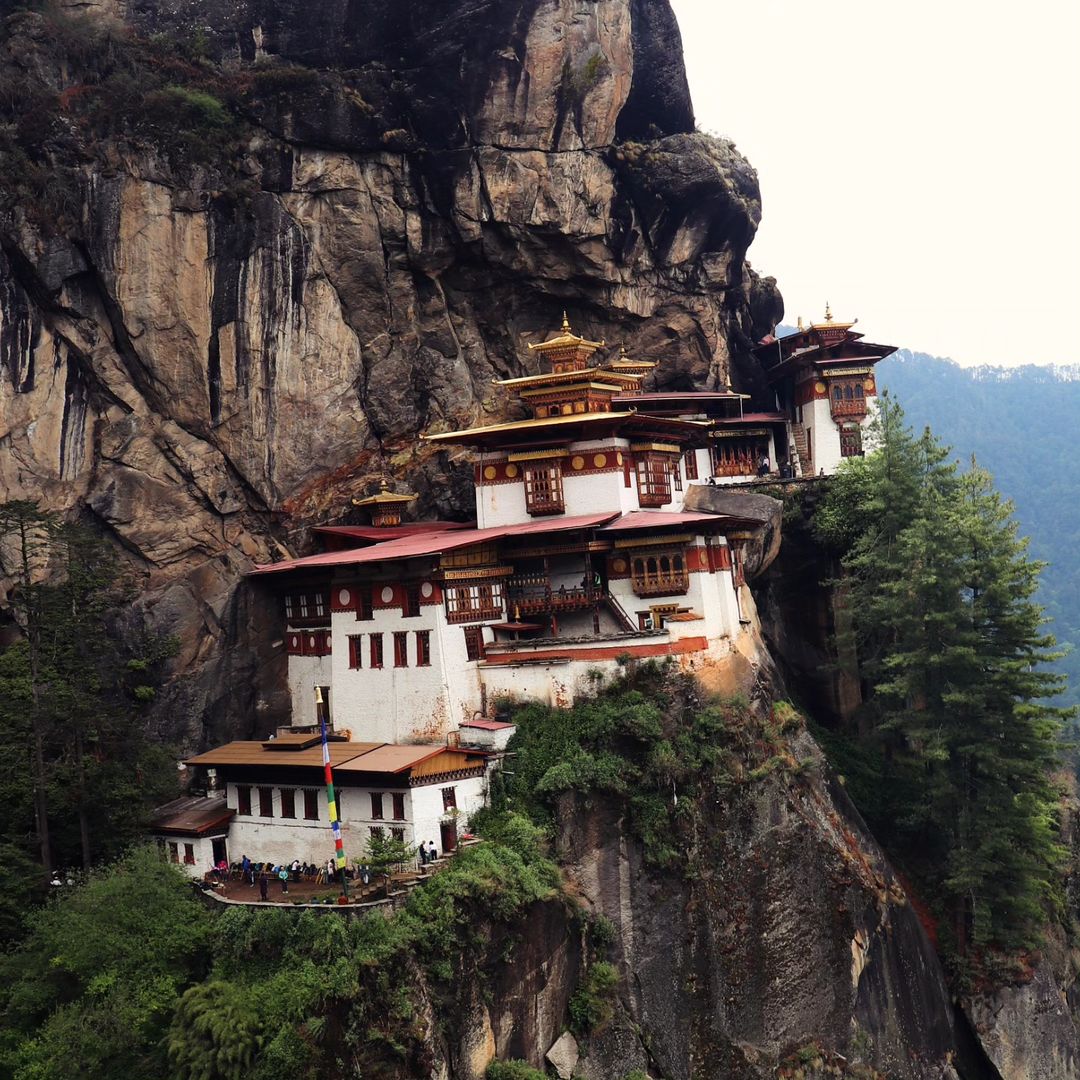
Tiger’s Nest Monastery.
Image credit: @deepro.paul via Instagram
Tour to book: Chan Brothers Prestige’s 7D6N Bhutan Adventure includes a hike to the famous Tiger’s Nest Monastery, a visit to the picturesque Phobjikha Valley, and an exploration of historic dzongs in Thimphu and Punakha. Travelers will also have the opportunity to experience local culture through visits to traditional markets and interactions with Bhutanese communities.
We don’t know about you, but we think it’s the perfect blend of Indiana Jones adventure and Eat, Pray, Love soul-searching, all set against the backdrop of the Himalayan kingdom.
Short trips
Sometimes, it’s hard to justify a week-long trip, especially if you don’t have enough ALs left. Contrary to popular belief, it’s possible to squeeze all the note-worthy sights into 4 or 5 days. Think about it as doing your trip on 1.5x.
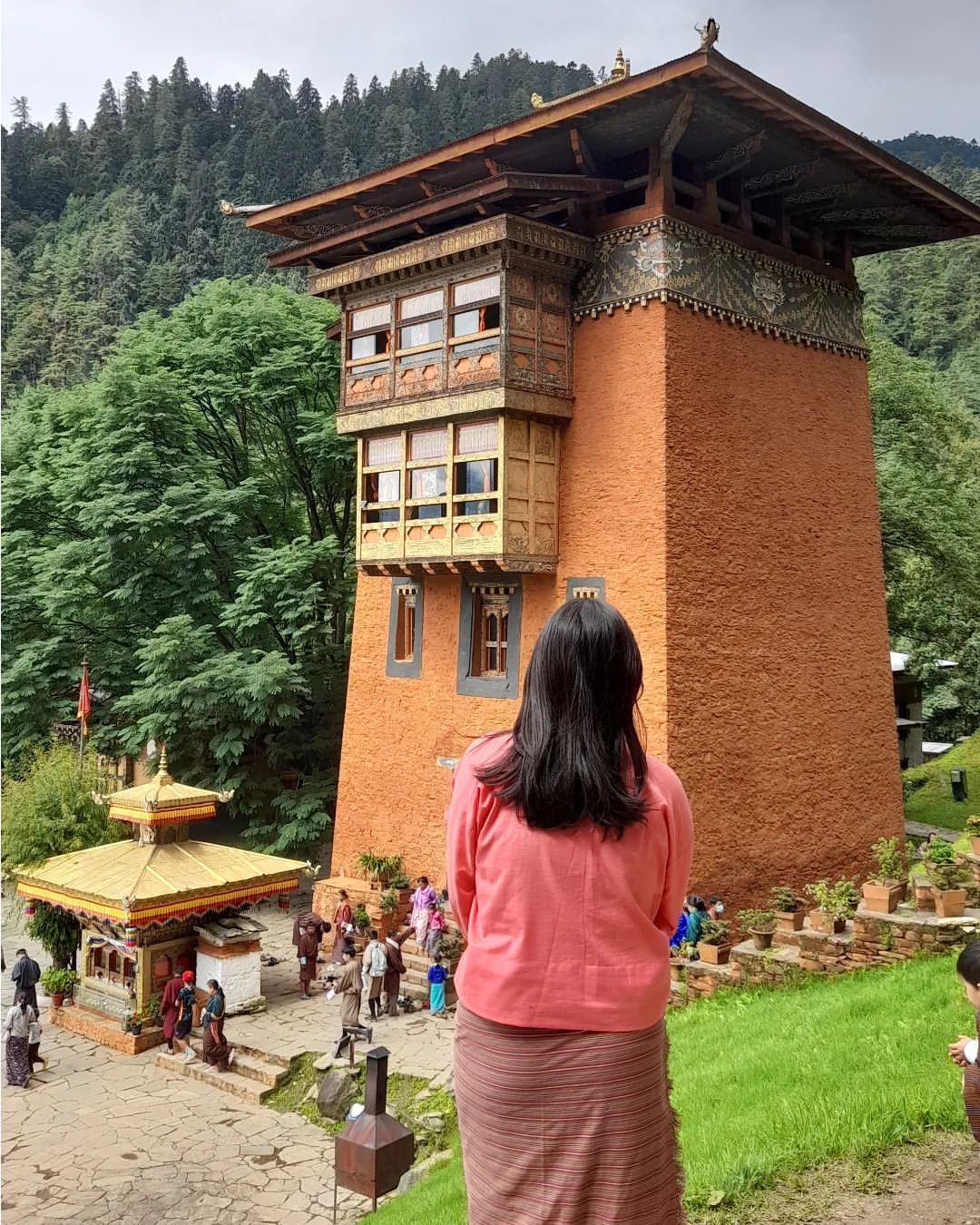
Thimphu.
Image credit: @tc.spamm_ via Instagram
Tour to book: Check out the 4 Days Highlights Bhutan Group Tour (from US$850) by Asia Odyssey Travel. It’s like a buffet of Bhutan’s best bits, done in 4 action-packed days – including exploring Thimphu, checking out the massive Buddha Dordenma statue, and tackling the famous hike to Tiger’s Nest Monastery. You may even find yourself planning your next, longer trip to Bhutan before you even leave.
Where to stay in Bhutan
When it comes to accommodation in Bhutan, there are plenty of options to suit every taste and budget – whether it’s cosy lodges nestled in the mountains, wallet-friendly guesthouses, or luxury hotels. That said, most tourists tend to focus their stays in 3 main areas: Thimphu, Paro, and Punakha.
Paro – Home to the Tiger’s Nest Monastery
You can’t have a travel guide to Bhutan without talking about Paro. This charming town is nestled in the Paro Valley and is often the first stop for visitors, thanks to the international airport.
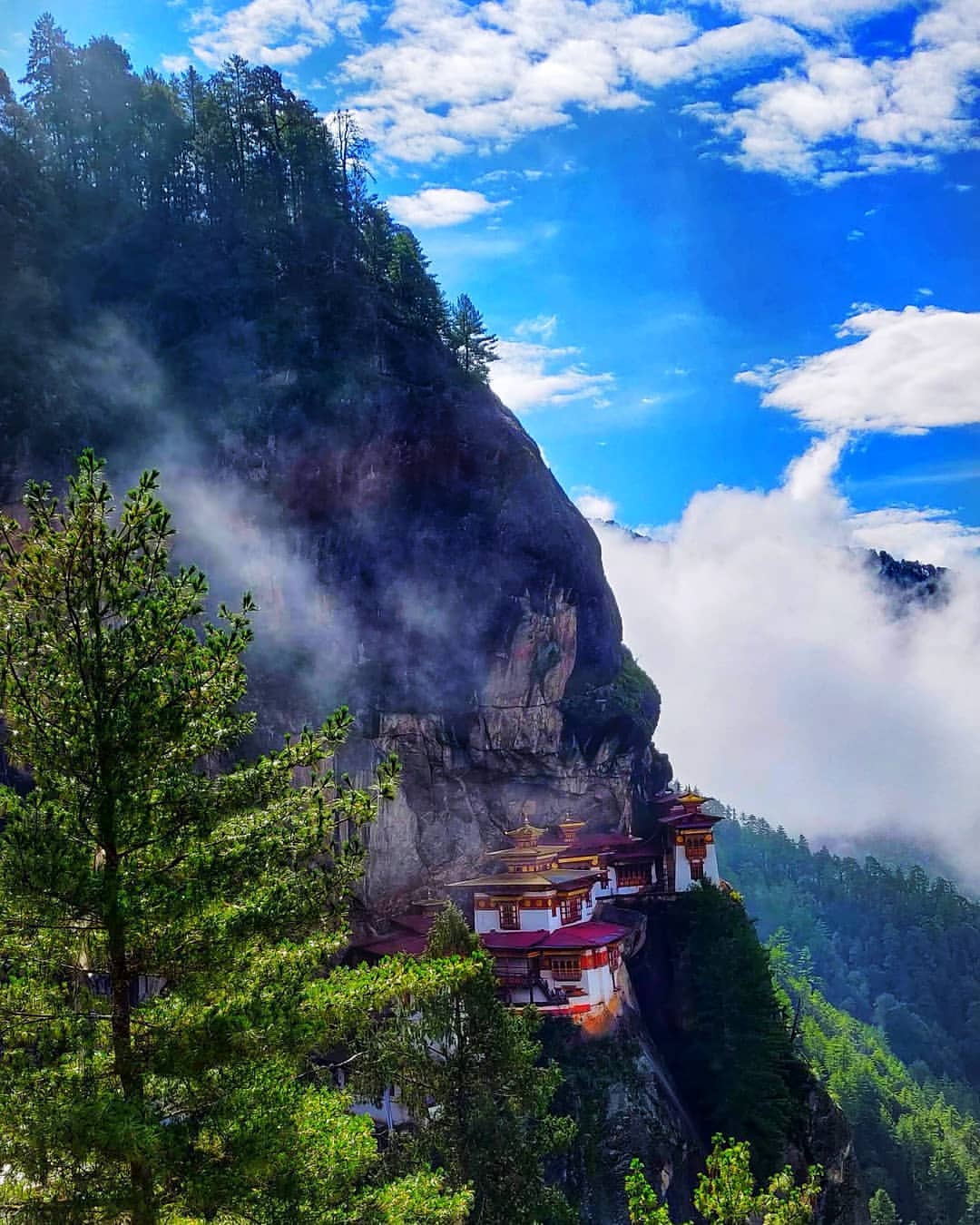
Image credit: @tigersnestmonastery via Instagram
Adventure seekers and spiritual enthusiasts flock to Paro for the iconic Tiger’s Nest Monastery, perched on a cliff face and accessible via a challenging but rewarding trek. It’s a 4-5 hour round trip, and you’ll climb to an elevation of 2,950m.
Do note that it’s a steep climb with some rather rugged terrain, so wearing proper hiking shoes is encouraged. If you’re not a seasoned hiker, we’d recommend you to take it slow, bring plenty of water, and consider renting a walking stick at the base.
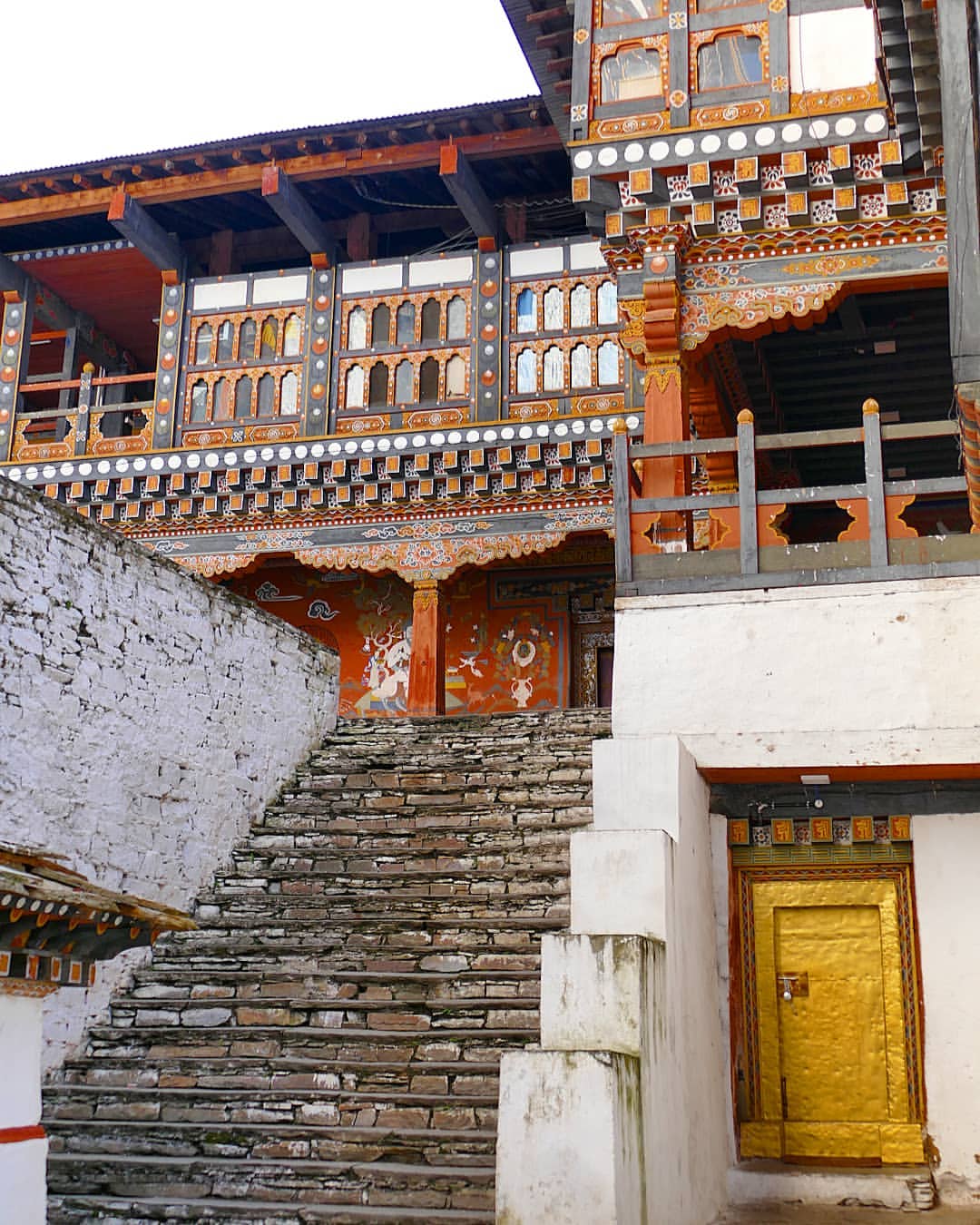
Rinpung Dzong.
Image credit: @milica_grujic_ via Instagram
Besides that, Paro is also a great destination for history buffs as its home to buildings with traditional Bhutanese architecture and Rinpung Dzong, an ancient fortress with a complex of courtyards, temples, administration offices, and open spaces.
Due to its proximity to some of the most popular attractions, Paro is well-suited for first-time visitors to Bhutan, especially those staying for just a few days. Paro Village View Home Stay and Paro Eco Lodge are authentic and budget-friendly stays located within proximity to the Tiger’s Nest Monastery and surrounding valleys and mountains. But of course, there are also super swanky stays like COMO Uma Paro.
Thimphu – The world’s only capital city with zero traffic lights
The bustling and largest city of Bhutan, Thimphu makes a great base for various types of travellers. Here’s a fun fact: It’s the world’s only capital city without traffic lights, which adds to its quirky appeal.
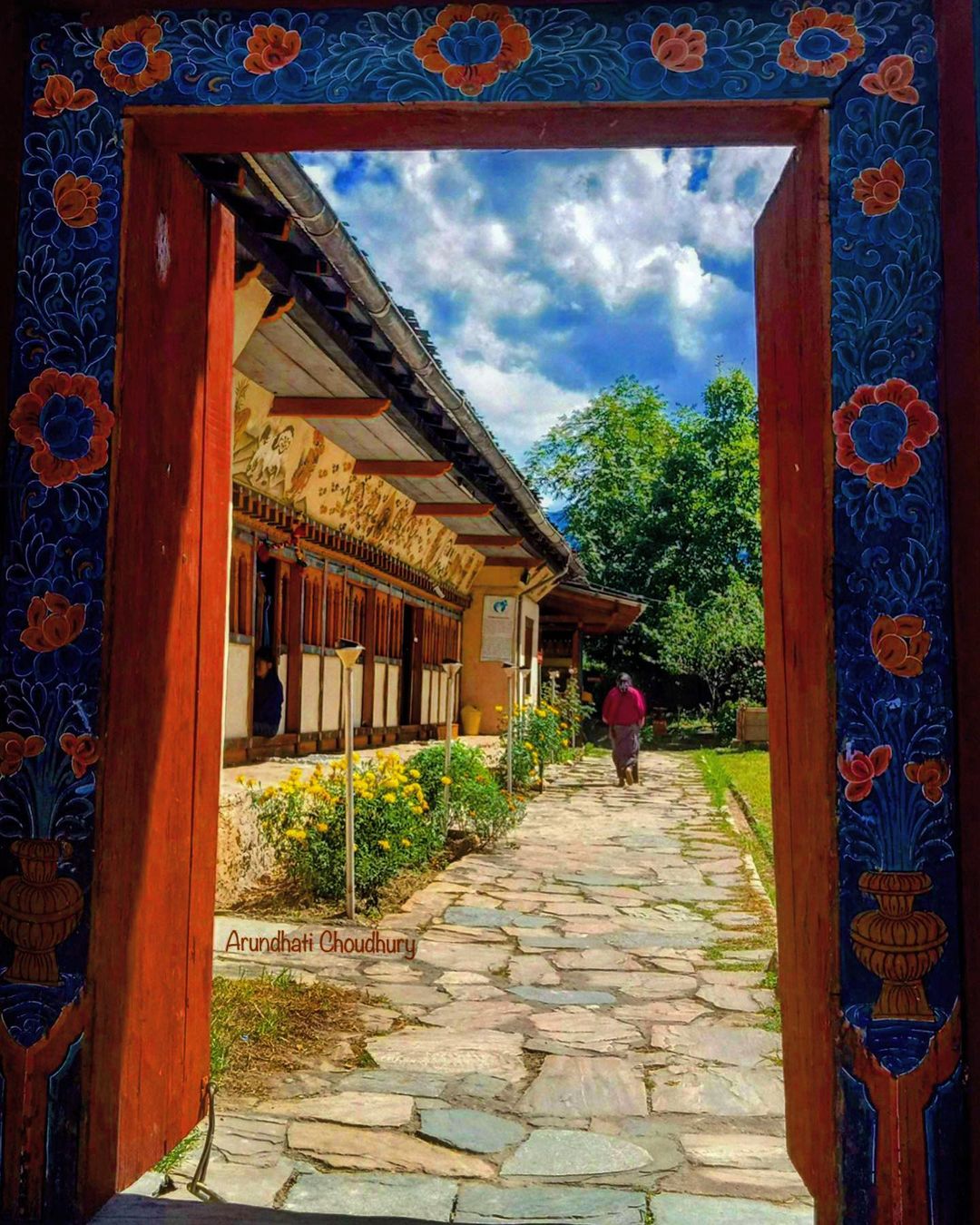
The Folk Heritage Museum.
Image credit: @pretty._.please_ via Instagram
Culture vultures will love its numerous museums, including the National Textile Museum and the Folk Heritage Museum. Thimphu is also the country’s business hub, making it suitable for corporate travelers.
View this post on Instagram
The massive Buddha Dordenma statue and the ancient Tashichho Dzong, a monastery and fortress, are also must-visit sites. After which, fuel up at the Thimphu Weekend Market, which has fresh farm produce, local delicacies, and handicrafts.
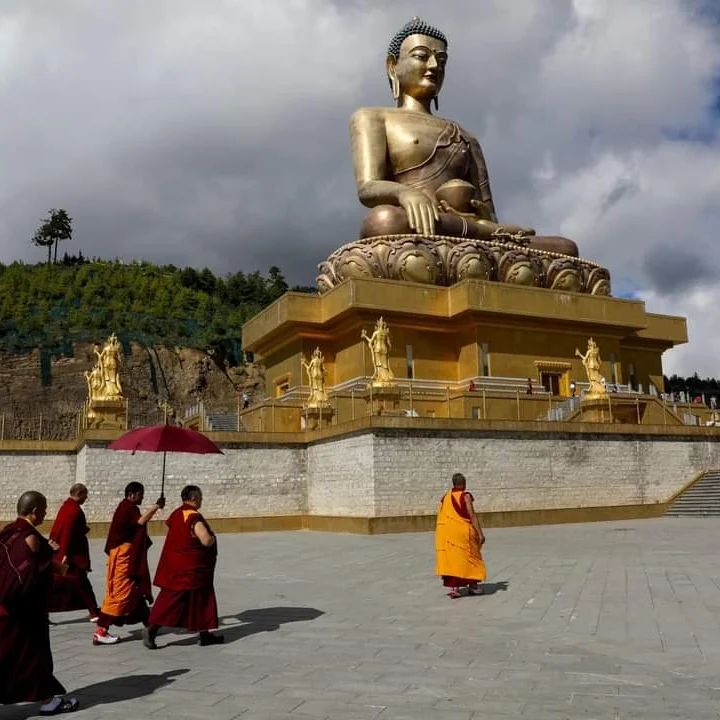
Image credit: @sangay0927 via Instagram
Nature lovers aren’t left out either, there are plenty of hiking trails near Thimphu. However, one you can’t miss is the Kuensel Phodrang Nature Hike, a picturesque trail with panoramic views of the entire Thimphu city center.
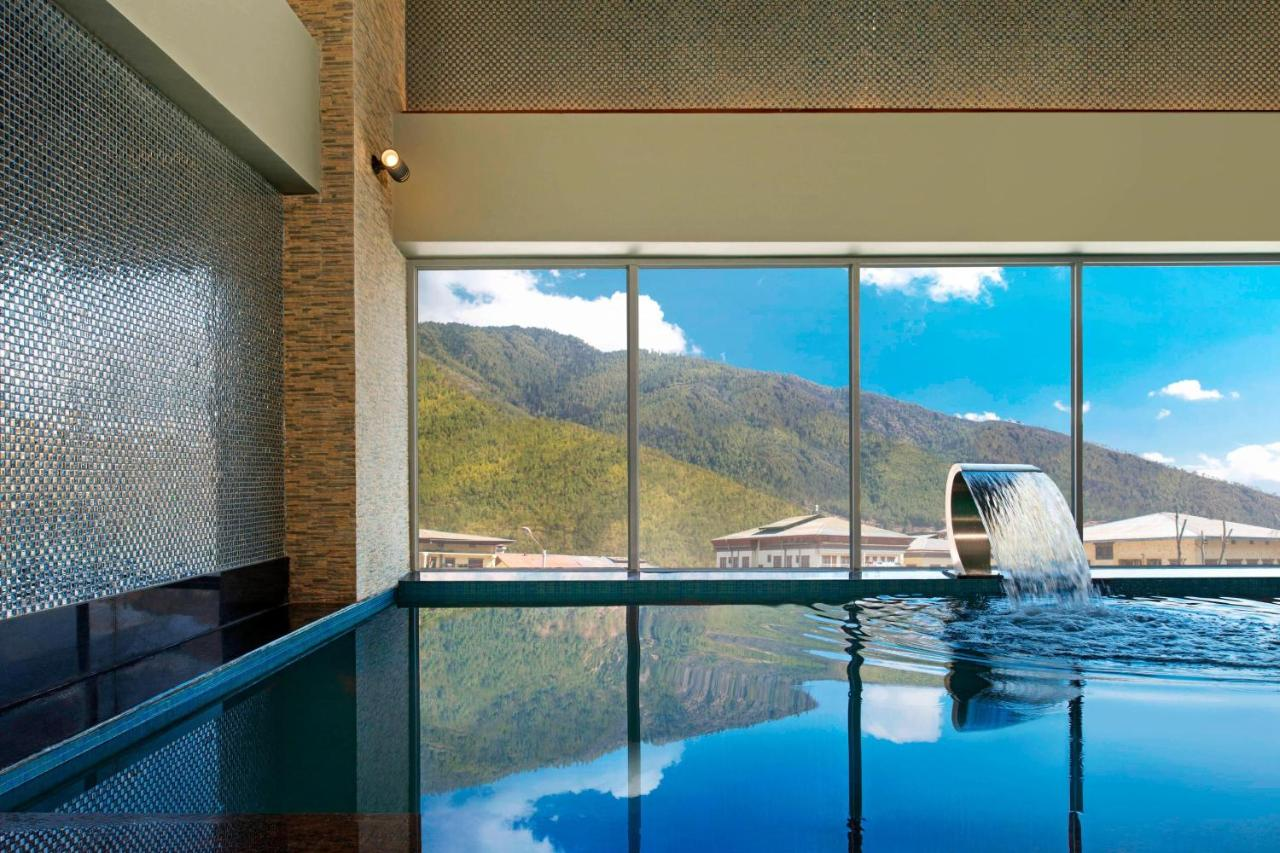
Image credit: Le Meridien Thimphu
In terms of accommodation, high-rollers can check into luxury hotels like Le Meridien Thimphu or Pemako Thimphu. But you don’t have to spend an entire year’s worth of travel budget to stay in Thimphu – there are also cosy stays at places like Bhutan Boutique Residency or Khamsum Inn.
Punakha – For history buffs
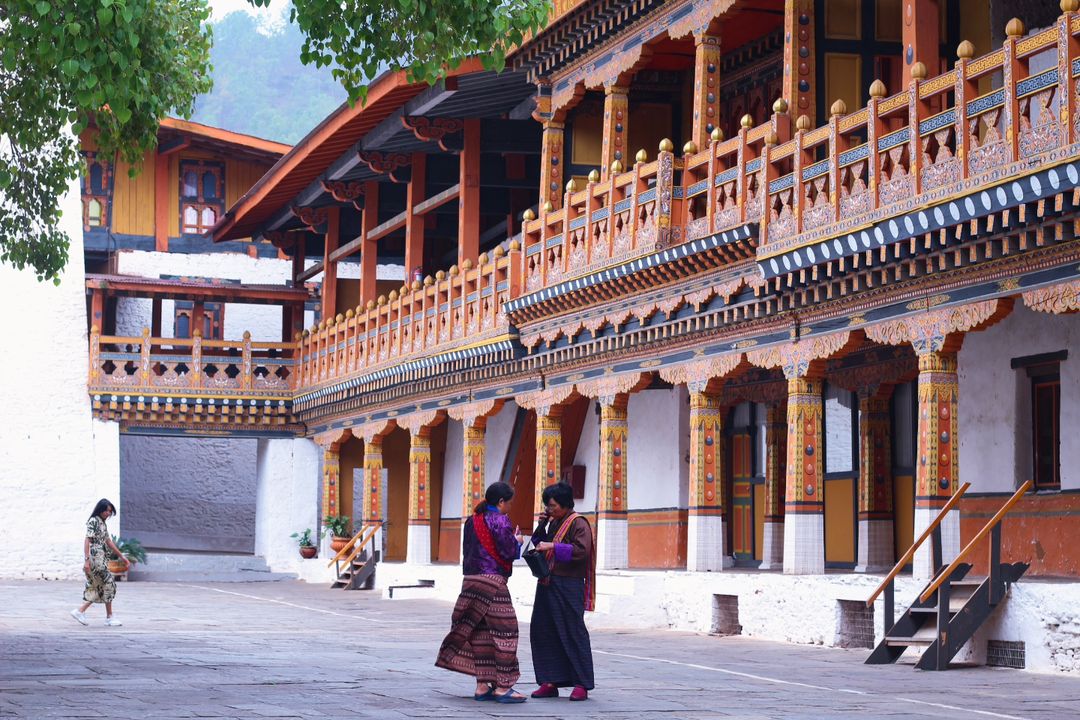
Inside Punakha Dzong.
Image credit: @travelwithrupesh via Instagram
For a more peaceful retreat, check out Punakha. This valley is known for the iconic Punakha Dzong, a 17th-century fortress located at the confluence of 2 rivers, Pho and Mo Chhu. Since its construction in 1637, this fortress has a played a pivotal role in Bhutanese history.
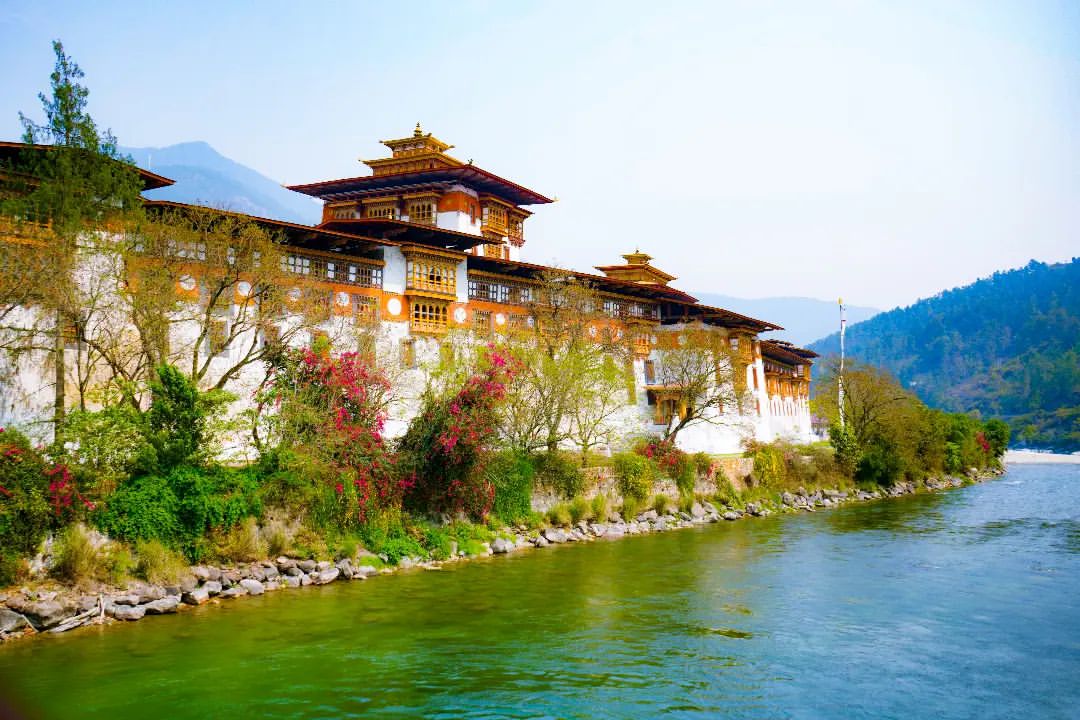
Image credit: @prakash01012020 via Instagram
Don’t skip the Punakha Suspension Bridge, one of the longest in the country, as well as Khamsum Yulley Namgyal, a stupa overlooking the Punakha Valley. It was built to ward off evil spirits in Bhutan and the world – so yes, we’d say it’s a rather significant monument.
Hotel-wise, Drubchhu Resort is conveniently located near Punakha Dzong, while the Punatsangchhu Cottages is ideal for budget travellers interested in experiencing rural life and culture.
When’s the best time to visit Bhutan
The best times to visit Bhutan are from March to May and September to November. These spring and autumn months offer mild temperatures and little rain, making Bhutan’s stunning landscapes even more breathtaking.
During these seasons, you’ll not only enjoy the most comfortable climate for exploring Bhutan’s natural beauty, but you’ll also get to experience some of the country’s most significant cultural celebrations.
Spring: Mar to May – Best for rhododendrons & cultural festivals
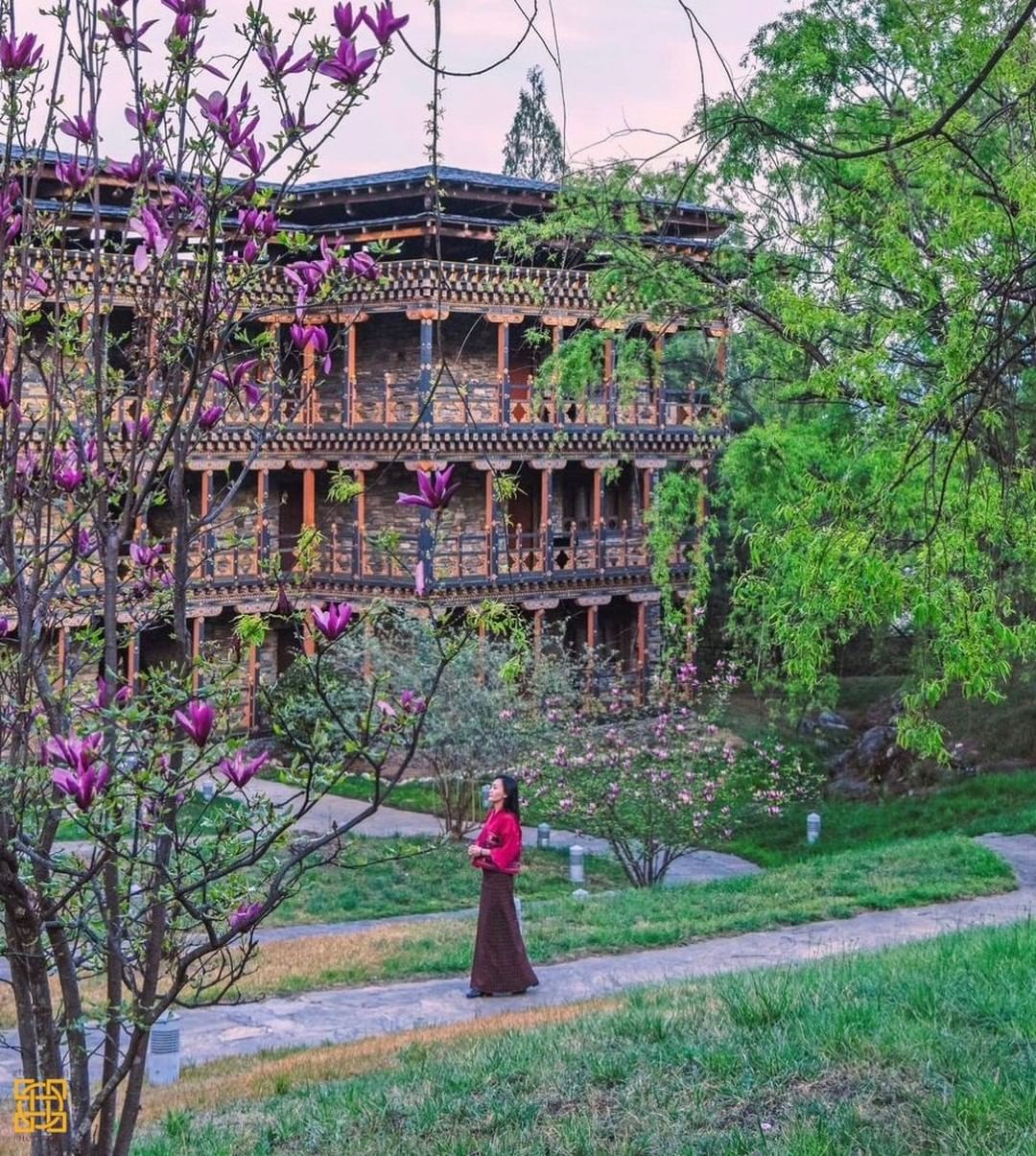
Image credit: @zhiwalingheritage via Instagram
In Spring, temperatures in Bhutan are comfortable, ranging from 4°C-20°C depending on where you are. It’s coldest in Paro, as it’s surrounded by valleys and mountains. Spring also marks the best time to see the blooming of rhododendrons – in fact, there’s even the Rhododendron Festival held at Lamperi Botanical Park.
This season also offers good opportunities for trekking and attending cultural festivals like the Paro Tshechu, one of Bhutan’s biggest spring festivals featuring masked dances, and Punakha Tshechu, which commemorates Bhutanese victories over Tibetan forces in the 17th century.
Autumn: Sep to Nov – For hiking & outdoor activities
Autumn brings clear skies – so you can get perfect views of the Himalayan peaks. The weather remains pleasant, making it ideal for outdoor activities and sightseeing. Lace up your hiking boots and take on popular treks like the Druk Path Trek and Jomolhari Trek, or choose to take in the landscapes on 2 wheels by going mountain biking.
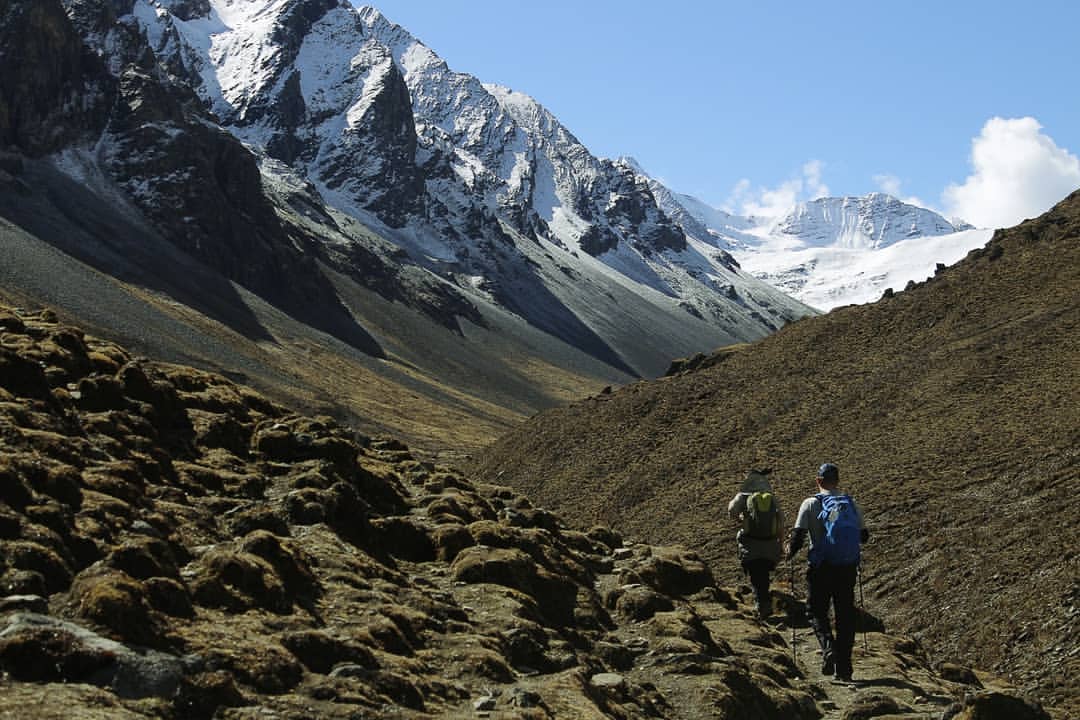
Jomolhari Trek.
Image credit: @riiinzeee via Instagram
If we had to pinpoint the ultimate best time to visit Bhutan, it’ll be in October. It combines the perfect weather conditions with major cultural events like the Thimphu Tshechu Festival.
How to get to Bhutan from Singapore
The most direct option is to take a flight with Drukair, the national airline of Bhutan, which operates flights from Singapore’s Changi Airport to Paro International Airport in Bhutan. There’s a layover in Guwahati, a city in India. The total flight time is around 6 hours and flight cost averages S$1,500 for a round trip.
Alternatively, you can also fly to Suvarnabhumi Airport in Bangkok and get a flight to Paro International Airport from there via Bhutan Airlines, with a layover in Kolkata. Flights from Bangkok to Bhutan cost around US$786.54 for a round-trip.
Other tips for travelling to Bhutan
To make your trip to Bhutan as smooth as butter, here are some other tips you need to know when going on your trip.
- First things first, cash is king here. Credit cards? Not so much. We’d recommend stuffing your wallet with ngultrums, the local currency, or carrying some US dollars to exchange upon arrival or at banks.
- When it comes to packing, layers are your best friend. This is especially important since Bhutan’s weather can be as unpredictable. When you’re visiting temples, remember to pack some modest threads.
- You’ll be doing a fair bit of walking, so don’t forget to pack a sturdy pair of hiking boots. Your feet will thank you, especially when you’re tackling the Tiger’s Nest Monastery trek.
- You should also be aware of potential altitude sickness, especially when conquering high-altitude spots. Consider acclimatising before attempting more strenuous hikes. Maybe start with a few leisurely walks before attempting to channel your inner mountain goat.
You’re all set for your trip to Bhutan
Now, you’re well-equipped with some knowledge, tips, and tricks for travelling to Bhutan. All you have to do is book your tour, buy your plane tickets, and pack your bags. It may be a more expensive travel destination than most – but trust us, this once-in-a-lifetime experience is worth the extra moolah you’ll be spending.
For more travel inspo, check out these best winter destinations in Australia or consider these China holiday destinations.
Cover image adapted from: @tourismbhutan & @travelwithrupesh via Instagram
